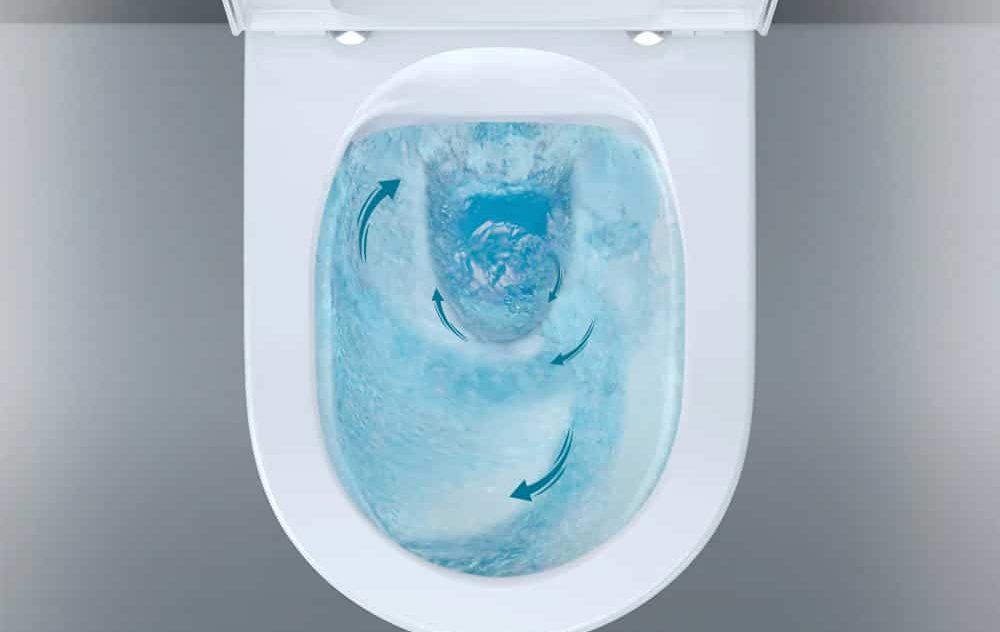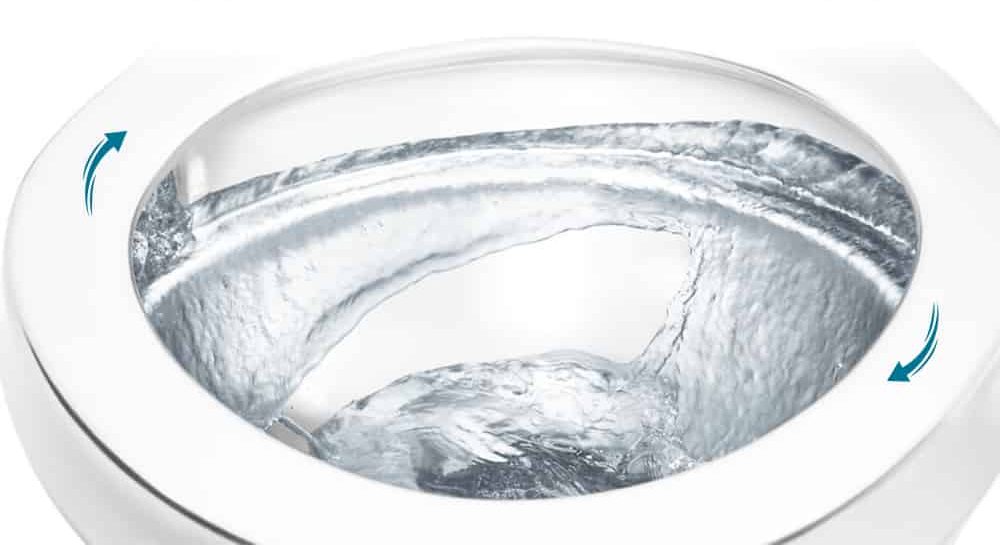There’s a lot to think about when choosing a new toilet. One of the most important considerations is a toilet’s flush performance, which goes hand in hand with water efficiency.
The easiest way to learn about a toilet’s flush performance is by checking its MaP rating. MaP is a standard score that represents how many grams of solid waste product a toilet can remove per flush. Scores range from 250 to 1,000. If you’re considering a water-efficient toilet, MaP testing is a real-world way to know if it has the power to remove waste adequately.
In this article, we’ll dive deep into the details and learn everything you need to know about MaP ratings. Let’s go!
Key Takeaways
- MaP scores provide valuable information on a toilet’s flushing performance.
- Scores range from 250 to 1,000 and measure how much waste in grams a toilet can remove with a single flush.
- MaP ratings are key in choosing a toilet that’s both water-efficient and high-performing.
- MaP uses rigorous and consistent testing protocols that replicate real-world usage to score toilet models.
What is a MaP Score?
The term MaP stands for Maximum Performance, which makes sense when you consider what it measures: a toilet’s flushing efficiency. In MaP testing, a particular toilet model is tested with a realistic medium (soybean paste and toilet paper) to measure the amount of solid waste (in grams) removed in a single flush. A toilet can be rated anywhere from 250 to 1,000 based on how many grams of waste it removes with one flush.
The MaP testing program was founded in 2002 after many consumers experienced flush performance issues with the first low-flow toilets (any model that uses less than 1.6 gallons of water per flush) of the 1990s. Prior to MaP, consumers had no idea how well a toilet they were purchasing would perform once they got it home. MaP ratings changed that by providing insight into a toilet’s flush performance.
It quickly became a reliable standard to rate toilet models, and now, around 5,000 toilet models have been tested using the MaP method.
Though MaP is a voluntary test, the test results are made public—so, you should take advantage of these scores as you shop to learn about the maximum amount of waste a toilet can remove per flush.
What Are the Standards?
As mentioned, the MaP test is done to rate the flush performance of a toilet. Though MaP scores don’t measure water efficiency, the information they provide comes in handy when evaluating water-efficient toilets. Let’s learn how MaP helps make sense of these parameters.
Flush Performance
In simple words, flush performance refers to a toilet’s capacity for waste removal. During the MaP test, a toilet is rated on the maximum amount of waste it can remove in a single flush. For example, if a toilet flushes up to 400 grams of solid waste, the MaP rating for that toilet is 400. Each toilet is pushed to the limit as solid waste is added until the model can no longer remove it in a single flush. MaP scores max out at a rating of 1,000.
The Environmental Protection Agency’s (EPA) WaterSense program sets minimum flushing performance at 350 grams of solid waste removed in a single flush, translating to a MaP score of 350. A toilet with this score would meet the expectations of most consumers, though many of the best-performing toilets receive a MaP score of 600 or more.
Water Efficiency
Water efficiency refers to the amount of water a toilet uses to completely remove solid waste from the toilet bowl. Nowadays, many toilets meet the EPA’s WaterSense standard of 1.28 GPF (gallons per flush) to save water, though the federal standard requires them to use no more than 1.6 GPF. While these limits save water, they can affect a toilet’s performance.
This is where MaP comes in! MaP ratings provide valuable insight into a toilet’s ability to effectively remove waste while achieving a water-efficient flush. Modern toilet manufacturers use advanced technology to reduce water usage without compromising toilet performance. In fact, some MaP-certified toilets use only 0.8 gallons of water per flush!
Now, let’s take a look at the MaP standard scoring.
MaP Rating Flush Performance Recommendation
0 to 250 grams: Not Recommended; Poor Flushing Performance
250 to 350 grams: Acceptable; Minimum Flush Performance
350 to 600 grams: Recommended; Strong Flush Performance
600 to 1000 grams: Highly Recommended; Great Flush Performance
MaP Testing
To rate a toilet model, the MaP test follows an easily replicable method using a realistic medium of soybean paste and toilet paper. If you’re curious about how laboratory technicians obtain MaP ratings, here’s a step-by-step walkthrough on how the MaP test is conducted:
Step 1: Preparing the Media
First, MaP mixes the medium that replicates human waste: soybean paste. The paste is distributed to testing locations, where it is formed into sausage-shaped segments. Each specimen should weigh about 50 grams, measuring around 100 mm in length and 25 mm in diameter. MaP testing protocol favors the use of latex-cased media, though uncased can be used at a client’s discretion. Four loosely crumpled balls of toilet paper should be added to the toilet bowl with the media upon testing.
Step 2: Test Setup
Manufacturers should provide the MaP testing facility with one randomly selected toilet model sample that has not been pre-tested. The water level in the toilet tank should be as per the manufacturer’s recommendation, and water supply pressure should be around 50 PSI. The recommended water temperature is 18 to 27°C (65 to 80°F). Before conducting the test, each toilet is flushed at least three times.
After that, the flush volume is measured. Every toilet has a flush volume rate that depends on a variety of factors, including whether the model is a single or dual flush type. If a toilet’s measured flush volume is 0.10 gallons greater than its rated flush volume, it will fail MaP testing requirements and be rejected.
Step 3: Waste Extraction Test
A drop guide is placed over the toilet bowl, and the soybean paste specimens are dropped freely into the bowl through the opening. The toilet paper is also added to the toilet bowl through the drop guide. After waiting 10 seconds, the MaP testers flush the toilet, and the solid waste is collected from a suitable container placed under the toilet. If any of the testing media remains in the toilet bowl or trap following the test, the test has failed. Otherwise, the toilet passed the test. Further testing should be conducted according to MaP protocol to determine a toilet’s MaP score.
To obtain the final MaP score, the test steps are repeated with more or less waste until a toilet’s maximum flush capacity—the point at which a toilet’s flush fails to clear the bowl—has been reached. This final measurement is noted and becomes the toilet’s MaP score. While increasing the loading mass, the amount of waste never exceeds the standard 1,000-gram limit.
How Do I Find a Toilet’s MaP Rating?
MaP ratings can guide you along your toilet purchasing journey—but how do you find a toilet’s MaP score? There are a few simple ways to locate this important information. We’ll give you the scoop below.
Official MaP Testing Website
Perhaps the simplest way to finding a high-performing toilet is by visiting MaP’s official website. There, you can read toilet reviews, check out flush ratings, and more. The website features a useful search tool to find toilets based on their brand, model, flush type, and other specifications. You can even sort toilets by MaP rating, making it easy to choose a model that gives you the best flush.
Look for the MaP Logo
Many toilet manufacturers and retailers list toilet MaP ratings on their product pages. This information is usually located in product specifications or details sections, so make sure to check for it next time you’re online window shopping for toilets.
Look on the Product Packaging and User Manual
If you prefer to shop in person, MaP scores are often printed on the toilet’s packaging or listed in the user manual. Keep an eye out for the MaP logo as you browse through your plumbing supply store.
Final Thoughts
We hope this crash course on MaP ratings has been helpful! As you shop for your new toilet, remember to keep MaP scores in mind. You can have the best of both worlds by selecting a water-efficient toilet with a high MaP rating, so play it safe by selecting a model with a score between 500 and 1,000 for superior performance.
To make your search easier, don’t forget to check out MaP’s official website for all the information you need on the most powerful toilets on the market. Happy shopping!


